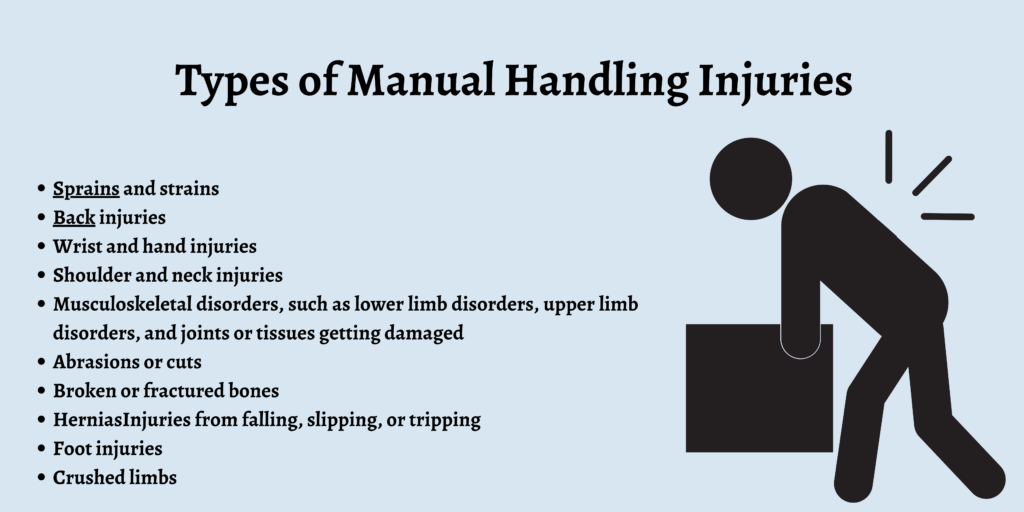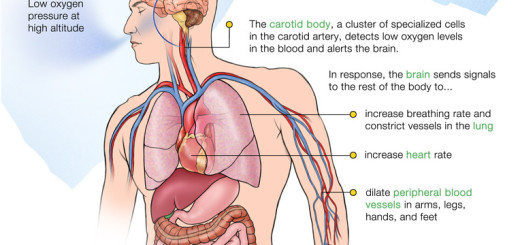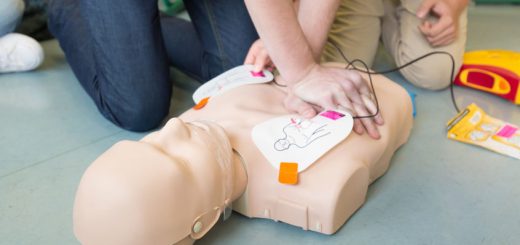What Does TILE Stand For in Manual Handling?
No matter which field a person belongs to or the kind of job they have, chances are that they will have to indulge in manual handling at some point or another. Regardless of how small or big the task is, following the proper rules of manual handling is imperative to ensure one’s safety.
Along with knowing the correct techniques of lifting, it’s also crucial to remove all the risks present before implementing a task, and TILE is one of the ways one can resort to in order to ensure that the task is carried out safely.
Manual handling can be defined as any kind of physical activity wherein a person is required to support or move a load using their hands or body. This could mean transporting, carrying, pushing, pulling, lowering, or lifting a load.
In such cases, “load” could also mean people or animals along with inanimate objects. An example of this would be the ones who work at care homes and hospitals or have a job in the farming industry and move residents, patients, and animals every now and then.
The Task
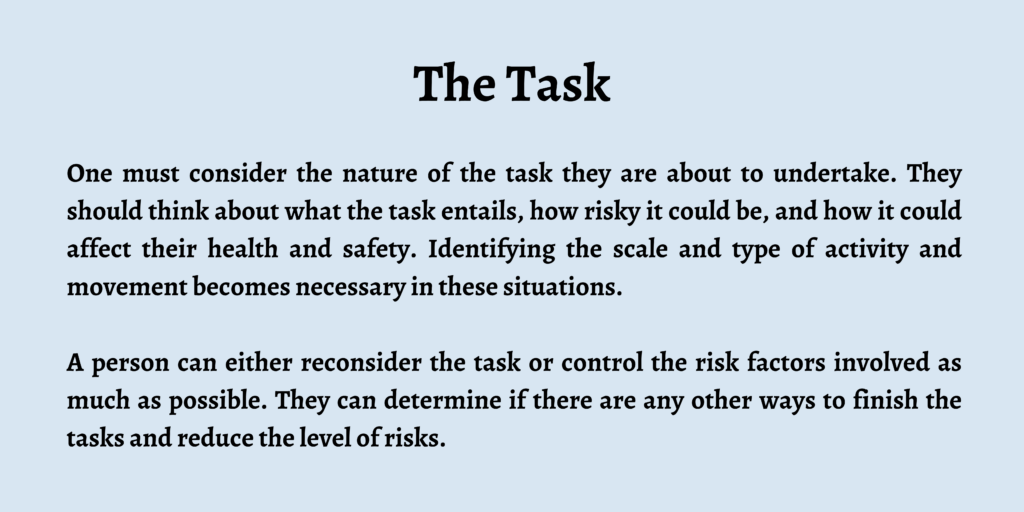
One must consider the nature of the task they are about to undertake. They should think about what the task entails, how risky it could be, and how it could affect their health and safety. Identifying the scale and type of activity and movement becomes necessary in these situations.
A person can either reconsider the task or control the risk factors involved as much as possible. They can determine if there are any other ways to finish the tasks and reduce the level of risks.
Think of how much time you will get to rest and recover during and after the task and if the load involved can somehow be reduced.
The things to consider when evaluating a manual handling task include the following:
(The bullet points present in the existing article.)
The Individual
The next step is to evaluate the individual who is expected to complete the manual handling task. In this case, different people have different capabilities to handle a task, and one must consider their age, height, physical strengths, health condition, and training level.
The other factors to consider with regard to an individual are:
- Whether they’re pregnant or have recently given birth
- Whether they have a serious health condition or injury
- Whether they suffer from a disability
- Whether they possess the knowledge and training required for the task
The risk assessment could suggest that the person scheduled to carry out the task is at risk if they take on the job; in that case, a different person could take their place instead.
Some of the questions to ask while evaluating the individual who is about to execute the manual handling task are:
(The bullet points present in the existing article.)
The Load
The load refers to the person or object that is about to be moved or handled. The factors to consider in this category are the load’s size, weight, shape, and nature and whether it could affect the safety and health of the person carrying it.
Other vital things to consider are if the load contains any hazardous items if there is a possibility of spillage, and if it could affect visibility in any manner.
If the load being moved is an animal or person, then assessing the load becomes even more essential. Remember to consider the physical container if the load being handled is an inanimate object.
Extra safety measures might have to be implemented once the several factors have been considered. This could include wearing the right protective equipment, taking the load apart to make it a safer object to carry, and employing any necessary machinery or equipment that can make the job safer.
When it comes to the load, here are some of the other questions to consider:
(The bullet points present in the existing article.)
The Environment
The environment is associated with the area the load is being carried or moved in because the ambiance in which the task is being carried out can play a major role in determining the task’s risk level.
Different factors that pose the possibility of increasing the risks associated with the task, such as the flooring, should be considered. Be sure to assess every element, such as ventilation, lighting, and any other hazards.
It’s wise to plan your route in advance so as to prevent risking the health and safety of anyone around you. A couple of the questions to ask in association with the environment of the manual handling task include:
(The bullet points present in the existing article.)
Why is TILE Important in Manual Handling?
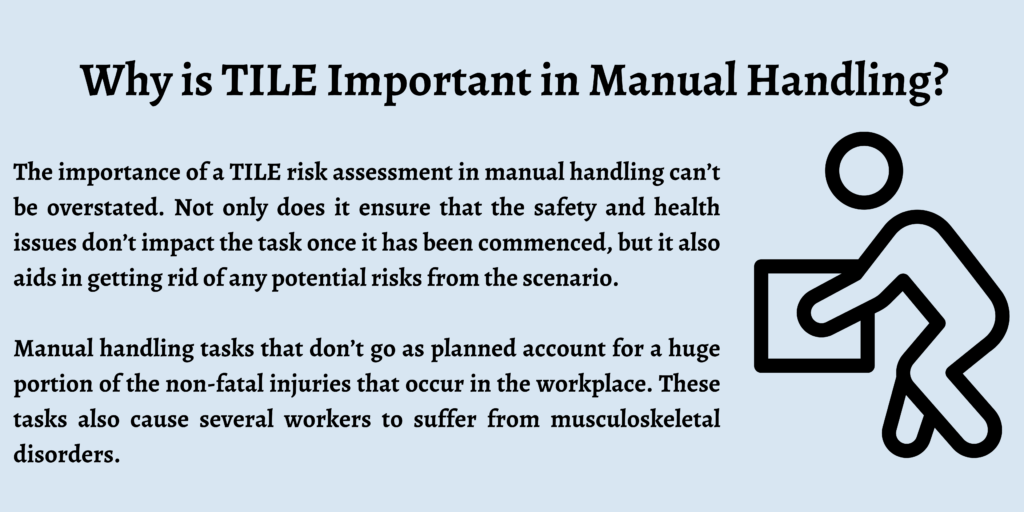
The importance of a TILE risk assessment in manual handling can’t be overstated. Not only does it ensure that the safety and health issues don’t impact the task once it has been commenced, but it also aids in getting rid of any potential risks from the scenario.
Manual handling tasks that don’t go as planned account for a huge portion of the non-fatal injuries that occur in the workplace. These tasks also cause several workers to suffer from musculoskeletal disorders.
Another reason why TILE is crucial in manual handling is because employers are legally obligated to ensure the safety of their employees during manual handling, and risk assessment is a part of that procedure.
Being aware of TILE helps in preventing a lot of injuries in the workplace and reduces the risk factors in the environment where such tasks are usually carried out.
What is Safe Manual Handling?
Whenever someone takes on a manual handling task, there are certain things to remember that can aid in reducing the risks and amplifying the safety measures for the worker:
- Plan in advance
Planning ahead entails analyzing the planned route and removing any potential obstructions or hazards. Check if any equipment will be required for the task and whether you will need to rest in the middle of the task.
- Wear the right clothing
Wearing the right clothes can reduce a lot of the potential risks, and this also includes footwear.
- Adopt the correct posture and position
Posture, position, and technique make a solid amount of difference when it comes to keeping injuries at bay. For instance, if you’re lifting something off the floor, remember to lower yourself completely while picking it off the ground. Extended arms and loads being kept at lower or higher levels can often cause more injuries.
- Be careful while lowering and placing the load
While lowering a load, remember not to use a lot of force to put it down. Make sure to lower it in the same manner with which you pick it up.
What Does TILEO Stand For?
TILEO in manual handling is another variation of TILE, wherein ‘O’ stands for “other factors.” These refer to the factors that don’t fall under the categories of task, individual, load, and environment and yet should not be forgotten while conducting a risk assessment.
Such factors could entail anything that affects the safety and health of manual handling tasks, including PPE or when there is a necessity to lift any equipment. These factors could often be linked to additional training required for a task or anything that increases the difficulty level of a task.
Types of Manual Handling Injuries
Manual handling tasks can cause a lot of injuries when not handled properly or safely. These incidents can occur due to the following:
Ø The usage of incorrect equipment or no equipment at all
Ø If the person is injured or was previously injured
Ø If the wrong posture or position is used to finish the task
Ø If the task is too arduous or heavy
Ø When repetitive body movements are involved
The following are the kinds of injuries that can take place while executing a manual handling task:
- Sprains and strains
- Back injuries
- Wrist and hand injuries
- Shoulder and neck injuries
- Musculoskeletal disorders, such as lower limb disorders, upper limb disorders, and joints or tissues getting damaged
- Abrasions or cuts
- Broken or fractured bones
- HerniasInjuries from falling, slipping, or tripping
- Foot injuries
- Crushed limbs
Conclusion
Every employer must ensure that TILE is carried out as a risk assessment method before an employee undertakes a manual handling task. It should ensure that no employee resorts to a task if any possible risks are involved.
Reducing the chances of risks helps prevent injuries and accidents, and everything right from the individual’s capacity to the nature of the task must be considered before one begins the task.
FAQs
1. What does TILE mean in manual handling?
TILE in manual handling stands for task, individual, load, and environment.
2. What is manual handling?
Manual handling is when a person is responsible for moving a load from one place to another. The load could be another human being, animal, or inanimate object.
3. What does TILEO stand for?
TILEO is a variation of TILE, where the ‘O’ stands for “other factors” that could affect the task in any way.
4. What kind of injuries can happen from manual handling tasks?
Some types of injuries that can occur from manual handling tasks are foot injuries, hand and wrist injuries, hernias, back injuries, and cuts or abrasions.
5. Why is TILE necessary in manual handling?
TILE helps in ensuring the person carrying the manual handling remains safe during the process. It aids in the assessment of risk factors before the task is initiated.

